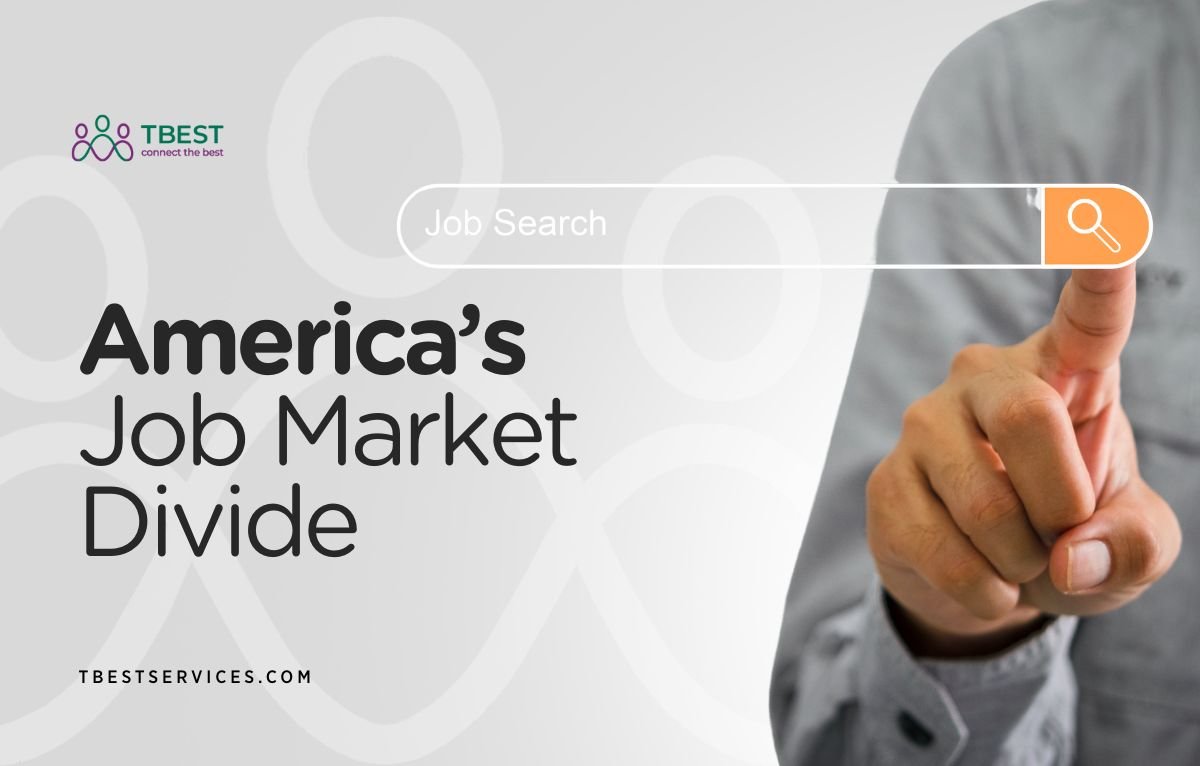
Instead of a strong surge, August brought disappointing news for the U.S. labor market. Only 22,000 new positions were recorded, and unemployment inched up to 4.3%.
Those numbers stand in contrast to last year’s pace, when monthly gains averaged well above 150,000.
What makes the report especially telling is how uneven the outcomes are. Health care and social assistance remain steady pillars of growth, but other industries, including manufacturing and professional services, have lost ground.
This split is reshaping how businesses approach hiring, with some facing tougher competition for talent while others see more candidates entering the market.
Tale of Two Job Markets
The most striking feature of the August report is how uneven the labor market has become. On one side, industries like health care and social assistance are creating jobs at a steady pace.
Health care alone added 31,000 positions in August, while social assistance contributed another 16,000. These gains reflect long-term demand driven by demographics, essential services, and public needs.
On the other side, several sectors contracted. Manufacturing shed 12,000 jobs, signaling strain from tariffs, global supply challenges, and cautious business planning.
Professional and business services also lost 17,000 positions, a troubling sign for an industry often viewed as a bellwether for the broader economy.
Taken together, the slowdown outside of health care and social assistance reveals how fragile many parts of the job market have become.
Policy and Technology
Part of the weakness traces back to trade policy. Tariffs have increased costs for importers and added uncertainty for businesses trying to forecast expenses.
When planning becomes unpredictable, companies often delay expansions and scale back on hiring. The result is a ripple effect that spreads across manufacturing and related industries.
Technology is also playing a role. Some economists suggest that rapid adoption of artificial intelligence tools is reshaping entry-level work.
While the extent of its impact is debated, companies experimenting with automation may be reducing demand for new graduates or workers at the beginning of their careers.
Employers in affected industries are therefore hiring more cautiously, watching to see how new tools change productivity.

Staggering Numbers Behind the Slowdown
Beyond August’s weak figures, the revisions to previous months highlight deeper issues. June’s data was corrected from modest job growth to a loss of 13,000 positions, the first monthly decline since 2020.
July’s numbers were revised slightly upward, but overall, the summer produced fewer jobs than initially reported.
According to labor economists, the average monthly job gains so far in 2025 represent the slowest pace in 15 years outside the pandemic period.
With more than 17 million additional people in the labor force compared to 2010, the sluggish growth feels even more striking.
For employers, this means more candidates may be available, but the pool is uneven. While some industries are shedding workers, others continue to compete fiercely for specialized skills.
Sector Strengths and Weaknesses at a Glance
Employers making workforce decisions can benefit from understanding where the divide is sharpest:
- Sectors Expanding: Health care, social assistance, and certain service providers tied to essential needs are still growing. These industries reflect long-term demographic and social drivers.
- Sectors Contracting: Manufacturing, professional services, and parts of business operations are struggling. Trade policies, economic uncertainty, and technology adoption are weighing heavily.
This divide matters because it shapes how employers approach hiring.
Companies in contracting fields may find larger applicant pools, while those in expanding fields will still need to compete aggressively for talent.

Inflation, Growth, and the Bigger Picture
The weak jobs data also intersects with broader economic concerns. Inflation remains above the Federal Reserve’s target, running near 2.9% annually.
Meanwhile, GDP growth has slowed compared to last year. This combination raises the risk of “stagflation”, a period where high prices and weak growth occur simultaneously.
For employers, this environment demands careful workforce planning. Rising costs can eat into margins, while slower growth pressures revenue.
Balancing these factors with staffing needs requires both caution and foresight. Some businesses may pause hiring expansions, while others may focus on retention and reskilling.
Federal Reserve’s Likely Response
In light of August’s disappointing report, most economists believe the Federal Reserve will cut interest rates at its September meeting.
The debate is over the size of the cut. A quarter-point reduction is widely expected, but some argue for a larger half-point move. Lower rates would reduce borrowing costs, offering companies an incentive to invest, expand, or adjust their staffing plans.
Employers should watch these developments closely. Interest-rate decisions can influence everything from consumer demand to capital investment.
For businesses planning their next moves, understanding how monetary policy interacts with hiring trends is critical.
What Employers Can Do Now
Adapting to a divided job market requires flexibility and foresight. Employers can take meaningful steps by:
- Strengthening workforce intelligence. Monitor labor market data regularly and benchmark it against your industry to anticipate where pressures may emerge.
- Revisiting compensation and benefits. In competitive sectors like health care, enhancing total rewards can make the difference in attracting talent without overspending.
- Exploring creative recruitment channels. Community partnerships, apprenticeships, and targeted outreach can help tap into candidate pools that traditional methods might miss.
These approaches give employers practical tools to respond to sector shifts and to build more resilient staffing strategies.
Navigating the Divide
The latest jobs report shows a market split down the middle, with some industries gaining momentum while others struggle to hold steady.
Leaders who understand this divide will be better equipped to balance recruitment, retention, and long-term planning.
At TBest Services, we work alongside employers to adjust to shifting labor conditions and to connect them with talent that fits their business goals.
In times like these, the right partner can help organizations stay steady and prepared for what comes next.
